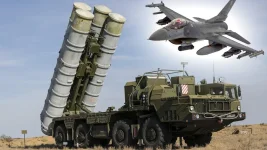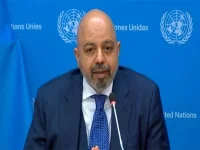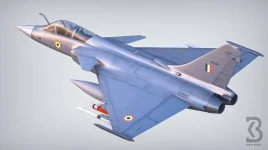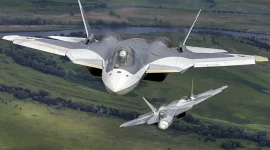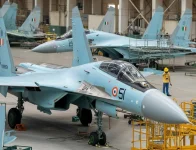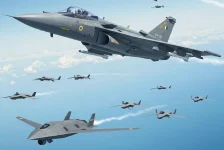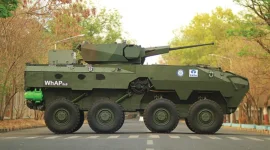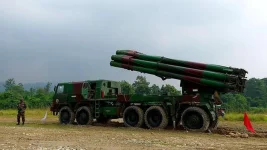India's ambition to achieve self-sufficiency in critical aerospace technologies heavily involves the creation of its own jet engines. The Gas Turbine Research Establishment (GTRE), operating under the DRDO, has dedicated decades to this challenge.
Key projects like the Kaveri engine, its improved successor Kaveri 2.0, and the engine for the future Advanced Medium Combat Aircraft (AMCA) are central to lessening India's reliance on foreign suppliers.
Essential to verifying these engines is a dedicated Flying Testbed (FTB) – an aircraft specifically modified to test engine capabilities during actual flight.
An opportunity has emerged as Air India, now owned by the Tata Group, prepares to auction its final Boeing 747 aircraft (registered as VT-ESO) on May 6, 2025, in Mumbai.
This raises a significant question for India's defence research planners: should GTRE acquire this iconic jetliner to serve as a dedicated FTB for its ongoing and future engine programs?
The role of a Flying Testbed is crucial in aero-engine development. It allows engineers to measure an engine's performance, check its reliability, see how well it integrates with the aircraft's systems, and test its endurance under the varied conditions of flight, such as different altitudes and speeds. This provides vital data that cannot be fully replicated in ground-based tests.
Historically, GTRE has depended on foreign FTBs, particularly a modified Ilyushin Il-76 aircraft based at Russia’s Gromov Flight Research Institute, for testing engines like the Kaveri. A Kaveri prototype was successfully tested on this Russian platform in 2010, and the engine's 'dry' variant is also scheduled for trials there following clearance in late 2024.
However, leasing these facilities involves high costs, complex logistics, and reduces GTRE's independent control over testing schedules, highlighting the strategic need for India to own its FTB.
The Boeing 747, a large aircraft with four engines, is globally recognized as a suitable platform for engine testing. Its four-engine design is a major safety advantage, allowing one engine to be replaced with the engine under test while the remaining three ensure safe operation. This redundancy is why nations like the USA and Russia often use four-engined jets for such purposes.
The 747's strong structure, substantial carrying capacity, and the ability to fit test engines using external mounts make it well-suited for evaluating engines across the required power spectrum – from the Kaveri variants (producing 49-75 kilonewtons of thrust) to the planned 110-130 kN engine for the AMCA.
The specific aircraft being auctioned, VT-ESO, is a Boeing 747-400 model that has been in service for approximately 31.4 years. The auction, managed by mjunction, will occur at Air India's Mumbai facility on May 6, 2025. Prospective bidders must submit necessary documents by April 30, 2025, with an inspection opportunity on May 5.
This presents a second chance for GTRE, which had previously shown interest when Air India sold four other 747s to a US company, AerSale, in April 2024. That earlier opportunity was missed, leading to some criticism regarding the lost potential to secure a national asset.
While the aircraft's age might seem like a concern, its potential lifespan as an FTB could be considerable. Two similar 747s sold last year were converted for cargo use, suggesting they still had significant commercial life remaining, possibly 10-15 years.
Used less frequently as a flying laboratory, VT-ESO could potentially serve GTRE for 20 to 25 years, effectively covering the development and testing timelines for the Kaveri, Kaveri 2.0, and AMCA engine projects.
Furthermore, this particular aircraft carries historical significance, having previously operated as 'Air India One', transporting India's highest dignitaries until 2020. Its acquisition could symbolically align a piece of national history with a vital national defence mission.
GTRE has explored other options, like the four-engined Airbus A340, but availability was an issue. While the Russian Il-76 remains functional, continued reliance on leasing is not a permanent solution.
The Boeing 747 represents a practical option, though GTRE must carefully evaluate the acquisition and modification costs against alternatives, such as developing a newer test platform or relying on partnerships, like the planned collaboration with France's Safran, which intends to use a Dassault Rafale jet as an FTB for the AMCA engine testing.
Securing Air India’s Boeing 747 could significantly accelerate GTRE's efforts. It would provide a dedicated national platform to validate the Kaveri engine (earmarked for the Ghatak unmanned combat aerial vehicle trials starting in 2025), support the development of the 90 kN Kaveri 2.0 engine (aimed for the Tejas Mk1A fighter jets by 2031-32), and aid the joint development of the powerful 110-130 kN AMCA engine with Safran.
The Indian Air Force's large order for Tejas Mk1A jets highlights the economic and strategic necessity of having indigenous engines, reducing dependence on costly imported engines like the current GE F404 ($7.2 million each) and mitigating risks associated with international sanctions or supply chain problems. The upcoming auction presents a critical decision point for India's strategic aerospace future.

